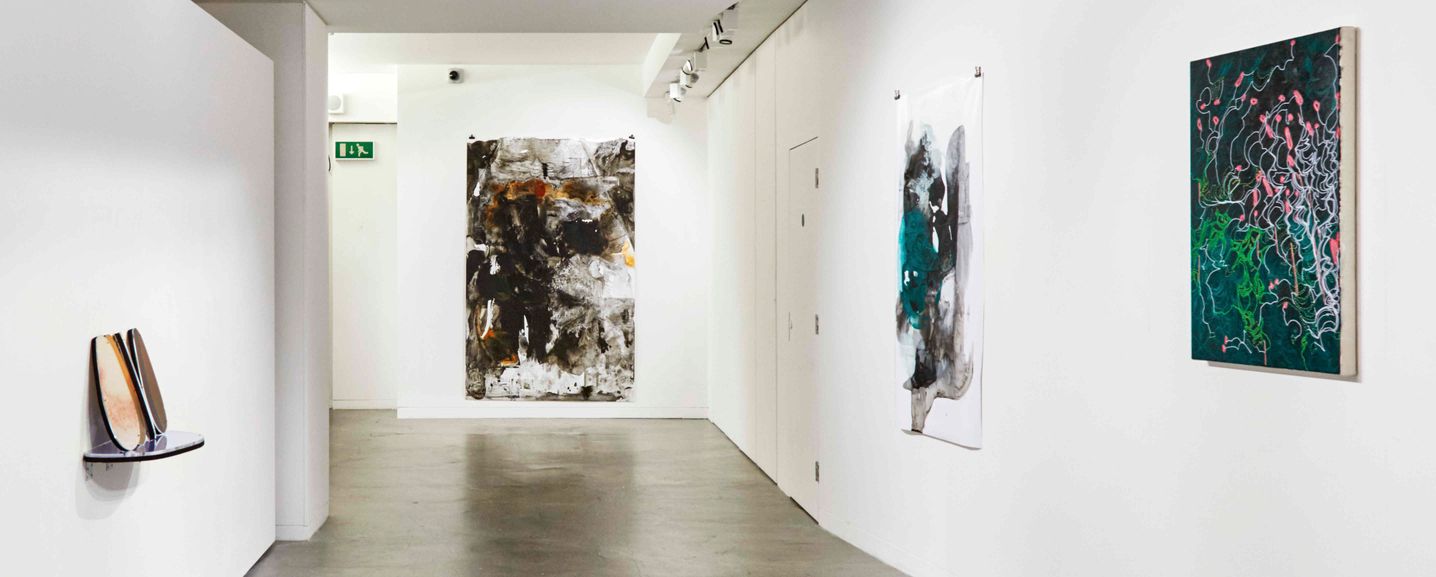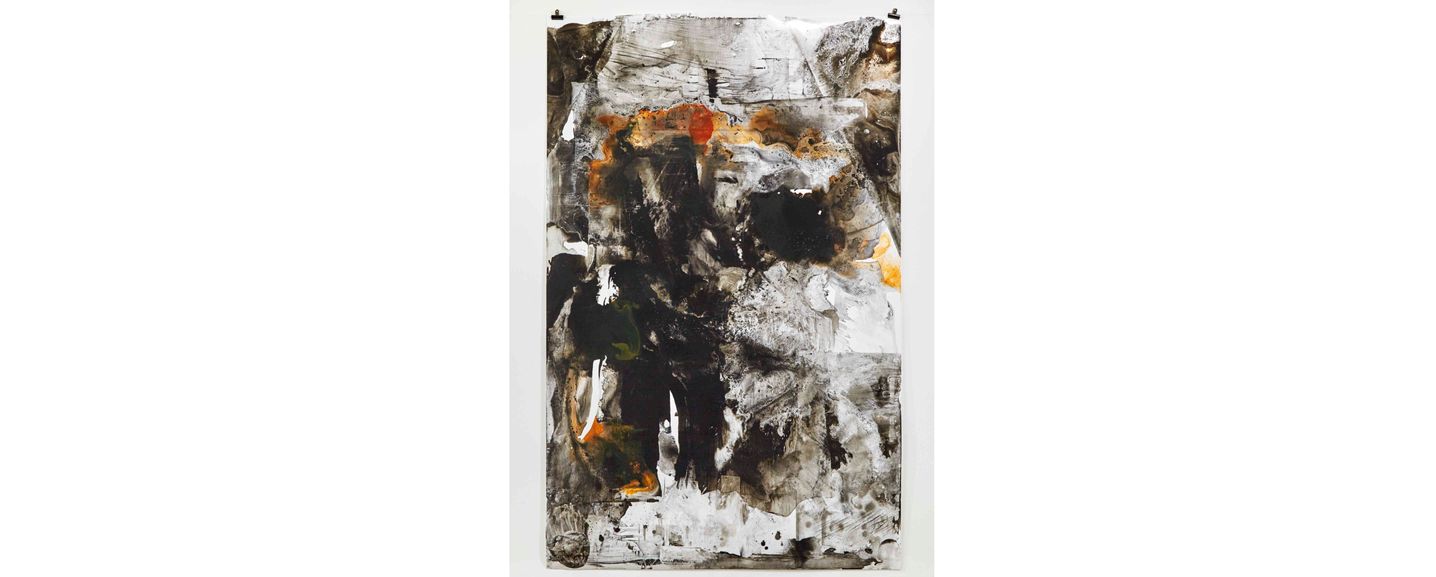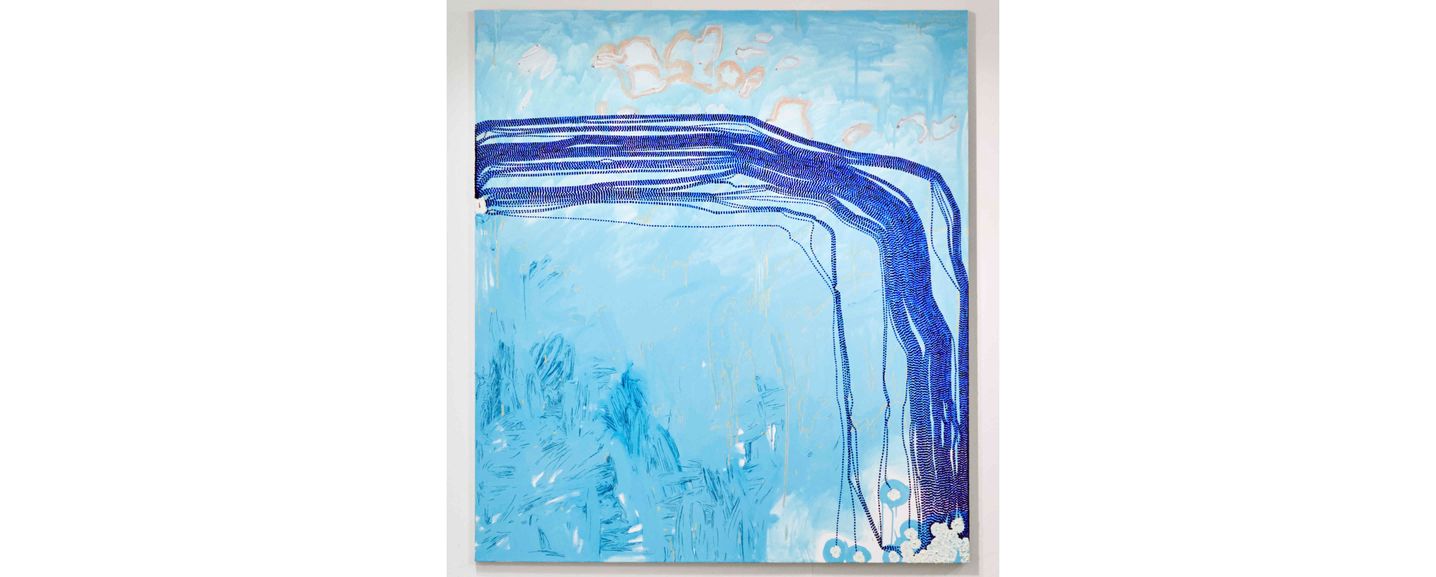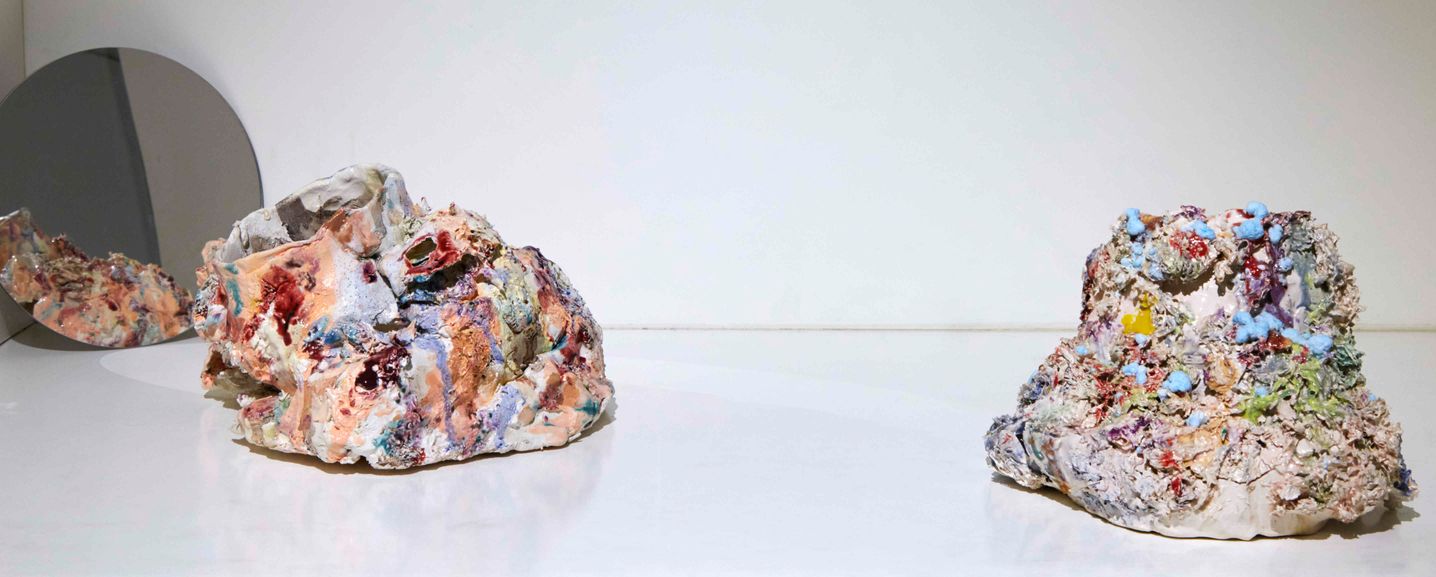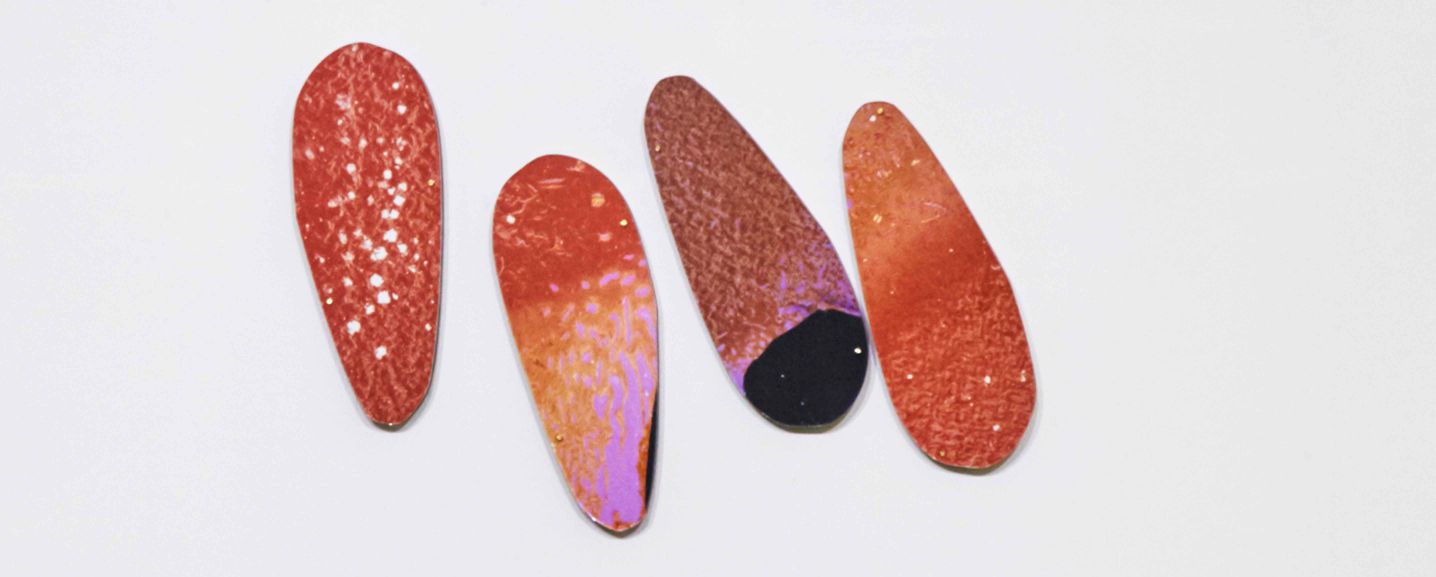Experiment Control 21 November 2018 - 6 January 2019
Artists in this exhibition: Sara Naim, Guy Marshall-Brown,Katie Pratt and Alex Gough, curated by Tess Charnley
When I look at Sara Naim’s Reaction 17, I see something tender in it. The four ovals are
placed in intimate conversation with one another. Their positioning provokes questions
about borders and space, about where reactions begin and where they end, and what this
might mean. These shapes are separate but, for the most part, touching, and united by
the mirrored oval that shelves them. Experiment | Control is an exploration of terrains,
borders, and boundaries transgressed both deliberately and by chance. The exhibition
presents work by four artists; Sara Naim, a sculptural photographer, Guy Marshall-Brown,
a ceramicist, Alex Gough and Katie Pratt, who are both painters. The artists’ respective
practices differ but are united by a common thread; the dichotomy between reactive
experimentation and rigorous control, between deliberate gesture and chance reaction.
This manifests in Pratt’s initial gesture of throwing paint at the canvas, followed by the
scrupulous formulation of rules which must be systematically followed for the painting to
be resolved; Gough’s creation of his own paint and its intuitive application, often using
domestic items; the deliberate but unpredictable collapse of Marshall-Brown’s ceramic
vessels when fired; and Naim’s exposure of expired polaroid film to light, followed by the
magnification and scanning of the results.
Reaction 16 and 17 from Sara Naim’s Reaction series are magnifications of micro-worlds.
But these micro-worlds do not emerge from a tangible ‘thing,’ they emerge from a
reaction. Naim’s process here is to expose expired polaroid film to light. This provokes a
chemical reaction which she magnifies and scans. The reaction is arbitrary but precise in
its results. Naim takes these images, these microworlds, and uses them as photographic
sculpture to challenge notions of border, of photography, of interiority and exteriority.
When we interact with and respond to the works, we do not just engage with what is
within its rims; the work negates boundaries and the negative space created by the work
holds equivalent value to the images and processes held within its borders.
Guy Marshall-Brown’s process begins with creating crude coiled forms that are
purposefully unsound. He then fires them with the addition of combustible materials such
as corrugated cardboard. He knows that that these forms will collapse in the kiln but does
not know what this collapse will look like until he opens the kiln door. Similarly, he knows
that a reaction will occur between the clay and the combustible materials to create new
terrains during the firing but the aesthetic results of this process are also unpredictable. In
this way, Marshall-Brown’s work treads a fine line between intention and chance.
Although he is a ceramicist, the work exists between the planes of ceramics and painting.
The surface of Collapse Series #1 is undoubtedly painterly, particularly in the dripping and
pooling of the glaze. This work, however, along with the others in the Collapse Series,
does not hold up as a traditional vessel. It is not useful; it has holes and razor-sharp
edges. But this lack of utility is intentional. In this series, Marshall-Brown is questioning
why ceramics must be functional objects. By making them decidedly unfunctional, he
moves this series into the aesthetic arena; they become works of art, to be looked at, not
to be used.
When I look at Katie Pratt’s painting Lungweedock, a multiplicity of words come to mind:
spilling; seeping; pooling; collecting; tracking; washing. These words are active. And that
is what Pratt’s work is to me; active, living. Sometimes it isn’t completed for several years.
The painting lives on in the interim but it is dormant, waiting until Pratt is ready to revive it.
Pratt worked on Lungweedock for seventeen years. Not continuously, of course, but it
remained unresolved for almost two decades. Pratt acknowledges that when returning to
a painting after so many years, it becomes like a found object; like a conversation with
another artist rather than the organic continuation of a single work. And paintings are not
only revived by Pratt, but birthed by her other works, formed out of a chain-reaction. After
the initial ground (an ultramarine blue with acid-green) was laid down for Lungweedock
(titled Lunguedock at the time), the painting was placed flat to dry beneath another, still
wet, painting. Silver dripped onto Lunguedock from the painting above, pooling with the
acid-green to form the polyps that we see in the painting now. The downward trajectory
of the polyps occurred from the painting being hung vertically while still wet. The surface
takes on the properties of blistered skin; the painting seems on the brink of a
transformation, another change in its property. As Pratt states, ‘The surface is semichoreographed,
with knowledge of potential but without certainty. Occasionally
something wholly unexpected occurs.’
Alex Gough’s process is key to his practice. Gough makes his own paint using pigment
and acrylic binder as a way of controlling the paint’s viscosity and intensity. This aspect of
control in Gough’s practice, when considered in relation to the fact that he paints on
photo inkjet paper (with its highly reactive surface), creates a dichotomy between the
control and the experimentation that he establishes; his choreography of the paint versus
the unpredictable relationship between the paint and the photo inkjet paper. Gough has
also recently introduced cast-iron powder into his practice, which we see in his smaller
works in the exhibition, a reactive material that causes the paintings very surfaces to rust.
This process initially seems counter-intuitive; Gough is deliberately eroding his work. But
it is the terrains formed by this rusting, this erosion, that create a sense of wilderness in
this work. Gough’s Wilderness in Paint series invites the viewer to exist within the works,
continually questioning their position. The space of the work relishes its own instability; it
moves and fluctuates, it is sparse and fleshy, glossy and matt. Gough’s abstract paintings
at once encompass the calm of a Finnish forest and the chaos of an acid-house rave. In
Wilderness in Paint #71, we are invited to enter through the microworlds and
macroworlds, the chalky mark of orange in the oil-spill green-black surrounding it, that
Gough choreographs. His work enthrals. It’s gestural ambiguity places utopic landscapes
alongside dystopic ones, depending on your positioning, and encourages the viewer to
question: where are we in this wilderness? Where are we in this paint?
- Tess Charnley
